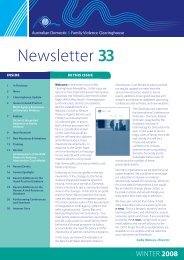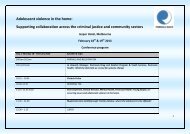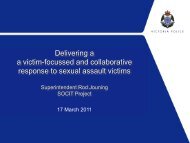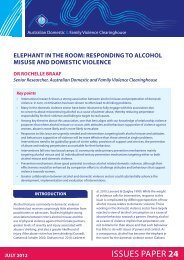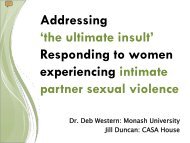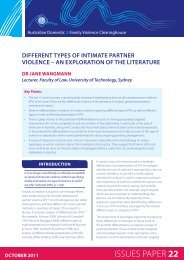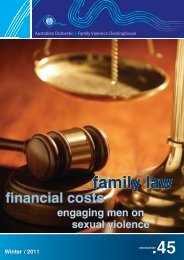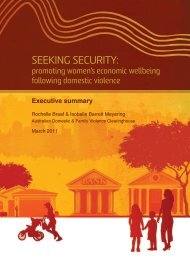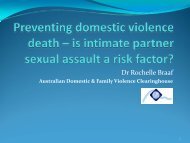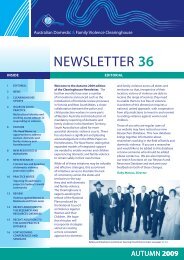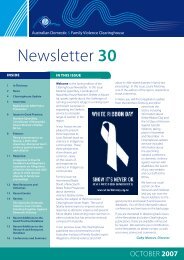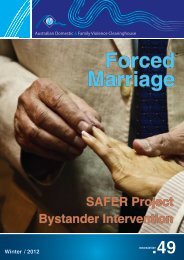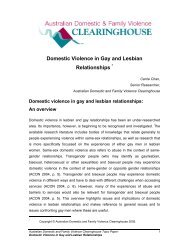Violence through our eyes - Women With Disabilities Australia
Violence through our eyes - Women With Disabilities Australia
Violence through our eyes - Women With Disabilities Australia
Create successful ePaper yourself
Turn your PDF publications into a flip-book with our unique Google optimized e-Paper software.
video, in plain English, in Braille and/or with pictures and images which are<br />
understood by the community;<br />
• Services should be enc<strong>our</strong>aged to utilise translator and interpreter services and<br />
include funding for interpreters and translations in their budgets and funding<br />
applications.<br />
Existing ‘Mainstream’ Programs:<br />
• The issues faced by women from NESB with disability and carers should be more<br />
fully integrated into the broader strategies of both Commonwealth and State<br />
government initiatives aimed at reducing violence against women;<br />
• Use existing national and state awareness days to present positive information and<br />
strategies for women from NESB with disability and carers e.g. International<br />
<strong>Women</strong>’s Day.<br />
Nothing about us without us<br />
A key recommendation from the series of forums MDAA held with women from NESB with<br />
disability and female carers from NESB who have experienced violence was the<br />
importance of including them at all levels of developing, delivering and reviewing programs<br />
that will have direct impact on their lives. Too often people with disability are ignored, with<br />
services and programs being created for them rather than with them.<br />
MDAA strongly recommends future program developers include women from NESB with<br />
disability as prospective members of committees and steering groups at national, state<br />
and local levels.<br />
An integrated and co-coordinated strategy between government departments and nongovernment<br />
organisations is required if a national strategy to reduce violence against<br />
women is to be truly effective.<br />
Investing in Research<br />
At present, the prevalence of violence against women with disability is unknown, however<br />
as the anecdotal evidence continues to increase regarding the prevalence of violence<br />
against women from NESB with disability, the need for a comprehensive study cannot be<br />
ignored.<br />
MDAA supports the suggestion that local, state and national initiatives invest in<br />
researching the prevalence of abuse against women from NESB with disability, their<br />
experiences and the nature of abuse. Since the interaction of disability, gender, violence<br />
and cultural diversity in the <strong>Australia</strong>n context is largely unknown within the literature this<br />
should also be a focus of future research.<br />
Communication strategy<br />
A targeted communication strategy aimed at women from NESB with disability is needed<br />
to ensure that awareness of available support and programs is increased. It is important to<br />
note that a ‘one size fits all’ approach is not appropriate as not all communication styles<br />
are suitable for all NESB communities.<br />
In addition, funding for language support must be allocated to service providers <strong>through</strong><br />
funding arrangements. Services should be able to include line items in their budgets for<br />
interpreters, training in using interpreters effectively, and/or in cross cultural<br />
<strong>Violence</strong> <strong>through</strong> <strong>our</strong> <strong>eyes</strong> 18



